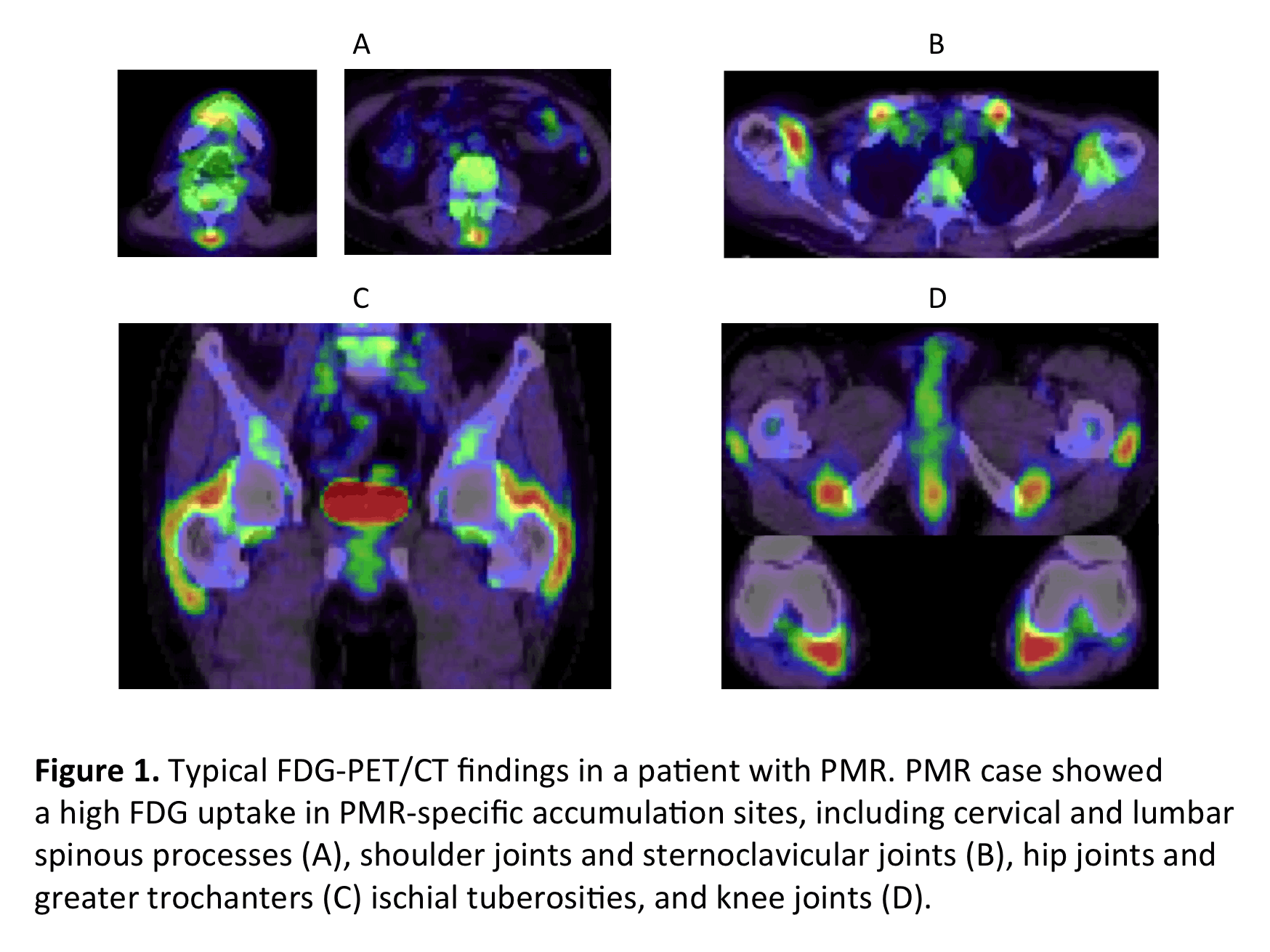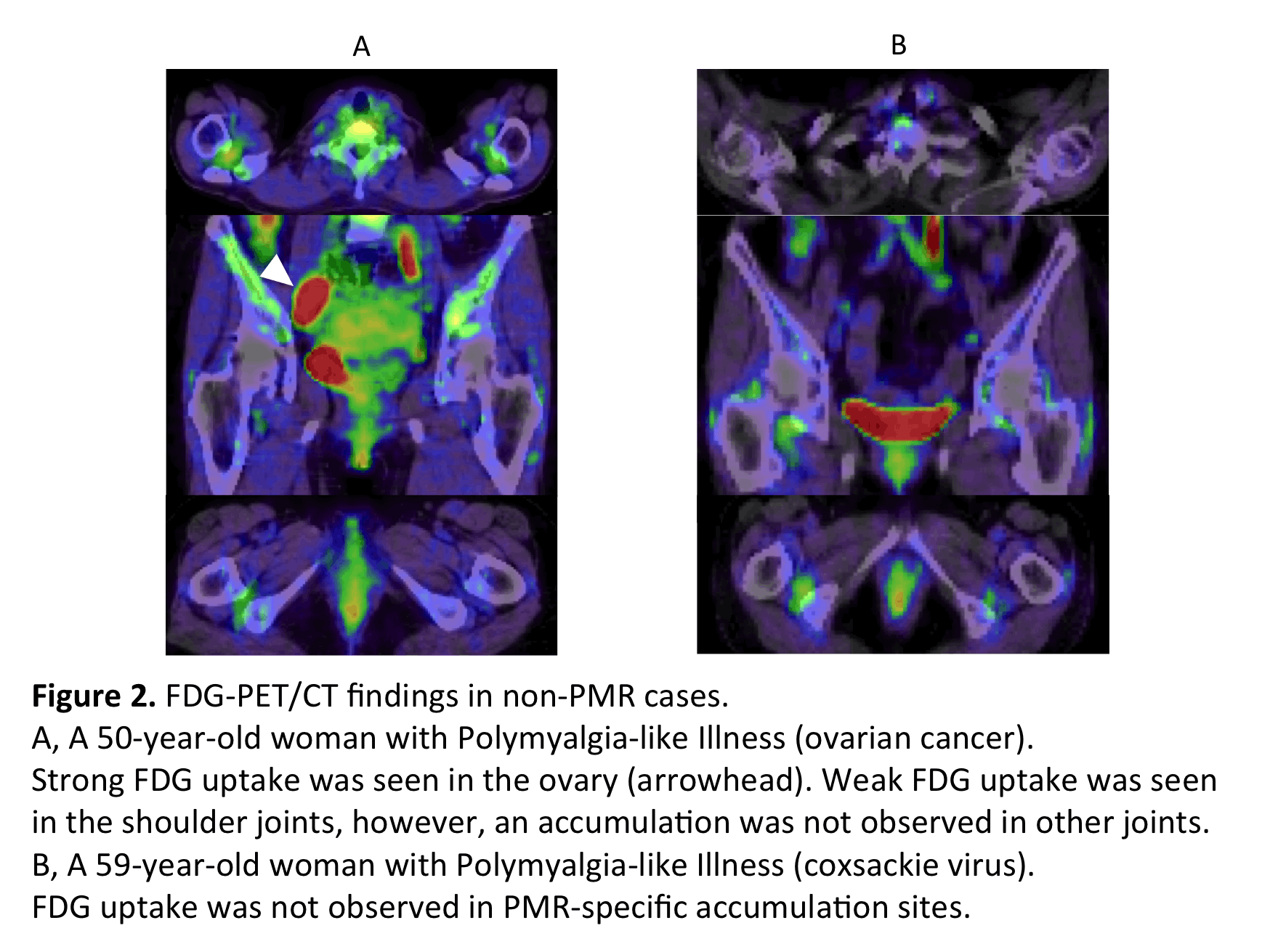Session Information
Session Type: Abstract Submissions (ACR)
Background/Purpose: Polymyalgia rheumatica (PMR) is an inflammatory condition that affects the elderly. It is characterized by pain and stiffness in the shoulder and pelvic girdles. Various inflammatory conditions such as infection, vasculitis, and neoplasms can mimic PMR. Owing to the low specificity of the diagnostic criteria of PMR, it is often difficult to distinguish PMR from the so-called “polymyalgia-like illness.” In previous reports of PMR imaging studies, rheumatic diseases such as rheumatoid arthritis were used as controls. Therefore, the differentiation of PMR from polymyalgia-like illness including paraneoplastic syndrome has not been discussed yet. Herein we performed 18f-Fluoro-Dexoxyglucose Positron Emission Tomography (FDG-PET/CT) in polymyalgia-like illness, and report on the findings.
Methods: Twenty-five cases of polymyalgia-like illness (PMR, 17 cases; paraneoplastic syndrome, 3; infection, 2; vasculitis, 1; others, 2) were analyzed using FDG-PET/CT.
Results: All patients met the diagnostic criteria of Bird et al. and the 2012 ACR/EULAR criteria. The average scores of PMR and non-PMR cases using these criteria were 4.35 and 4.13, respectively, and no differences were observed between these two groups in clinical presentations. FDG-PET/CT revealed that all PMR cases showed a high FDG uptake in PMR-specific accumulation sites, including the shoulder joints, sternoclavicular joints, hip joints, spinous processes, ischial tuberosities, and greater trochanters. However, non-PMR cases showed various patterns of accumulation. Furthermore, no non-PMR case showed a high FDG uptake in the PMR-specific accumulation sites.
Conclusion: These results indicate the usefulness of FDG-PET/CT for the differential diagnosis of polymyalgia-like illness including paraneoplastic syndrome. Together with the current diagnostic criteria, accumulation of FDG in PMR-specific sites is useful to more accurately diagnose PMR. Various patterns of FDG uptake on FDG-PET/CT in patients with polymyalgia-like illness reveal the diversity of pathogenesis in similar clinical presentations.
Disclosure:
H. Horikoshi,
None;
T. Nakanishi,
None;
R. Takahashi,
None;
F. Kimura,
None;
K. Itoh,
None.
« Back to 2014 ACR/ARHP Annual Meeting
ACR Meeting Abstracts - https://acrabstracts.org/abstract/effectiveness-of-18f-fluoro-dexoxyglucose-positron-emission-tomography-for-the-diagnosis-of-polymyalgia-like-illness/


